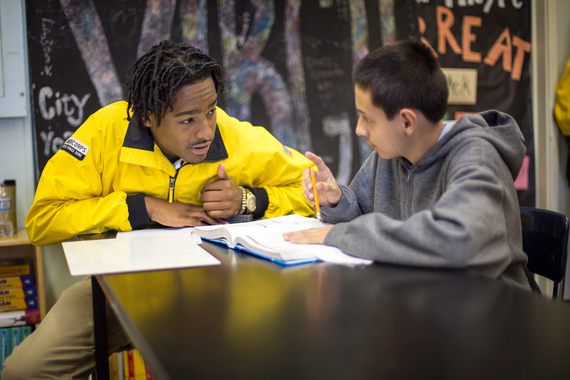Earlier this week, my children began school again. When we arrived on campus, we still did not know who all their teachers would be, or which classroom would be theirs, or what books they would need to order, but we did know one thing - everything was in their favor to ensure that they will graduate from high school.
I wish I could say the same thing of all Los Angeles children. Yet, the reality is one in five students will drop out before they receive their high school diploma. While these numbers amount to nothing less than a crisis, this issue does not garner enough attention because it does not strike all kids equally.
Instead, the vast majority of dropouts are from low-income families living in our city's poorest neighborhoods. These students often face daily disruptions that few of us can imagine - unstable sleeping arrangements, sporadic income sources, food insecurity, families tattered by abuse or incarceration.
Someone once told me the challenges a poor child faces in the classroom are akin to being asked to do a long-division problem moments after being told your house is on fire. It would, understandably, be nearly impossible to concentrate on the math equation after learning such news. For the kids in L.A.'s poorest neighborhoods, their metaphorical house is always on fire.
So with all of this, why am I optimistic about the future of children growing up in Los Angeles? Because we are at a critical tipping point.
Research coming out of Johns Hopkins University gives us an opportunity for a breakthrough. Now we can not only identify the communities producing the most dropouts and even the "dropout factory" high schools, but we can also literally pinpoint with surprising accuracy the individual students most in danger of dropping out as early as third grade.
It all comes down to three critical warning signs: chronic school absence, disruptive behavior and course failure in math and English. A child who exhibits even one of these indicators as early as third grade has a 75 percent chance of dropping out. But if we laser-target our resources to those same children, we can turn that statistic on its head and give them a 75 percent chance of graduating on time.
If you know in advance that you are going to make a significant return on an investment, how do you not invest? And when that investment is in kids' lives, not only do we have a remarkable opportunity to impact a generation of students, but we have a moral obligation to do so.
So, how do we make this happen? Providing individual, one-on-one support is consistently shown to be the most effective intervention for at-risk kids. The hurdle to this point has been how does an overtaxed school system with class sizes upward of 45 students deliver individualized support? Even the best teachers and administrators cannot meet the unique needs of all students the way schools are currently designed.
Organizations like City Year Los Angeles, whose board I chair, offer an answer. It's done with young adults committing to a year of national service during which time they provide a lower-cost but meaningful solution for cash-strapped school systems. These young adults, trained on the latest research, work as tutors, mentors and role models to the most at-risk kids in the neediest schools. In other words, they help fill the gaps between what schools are designed to do and the additional attention and support that students need to succeed.
City Year is not alone. There are other groups working hard to improve the education of L.A. children with evidence-based interventions, such as Communities in Schools, Vision to Learn, College Track, and PlayWorks, among others. These organizations continue to make real and important changes that are expanding opportunity in our city's poorest neighborhoods.
Finally, we are beginning to see funding changes that will help L.A. better address its educational crisis. Superintendent John Deasy announced this month a new plan to dedicate supplemental state funding to students at the highest risk of dropping out. These funds can be a game-changer for the most at-risk kids in our city's poorest schools. If we can effectively apply this new money and match it with increased support from the private sector, we can greatly expand the targeted work of these committed organizations.
The dropout crisis is, indeed, preventable. Now is the time to act on what we know works - and scale up.
(Author's note: A version of this piece was previously published in the Los Angeles Register)
